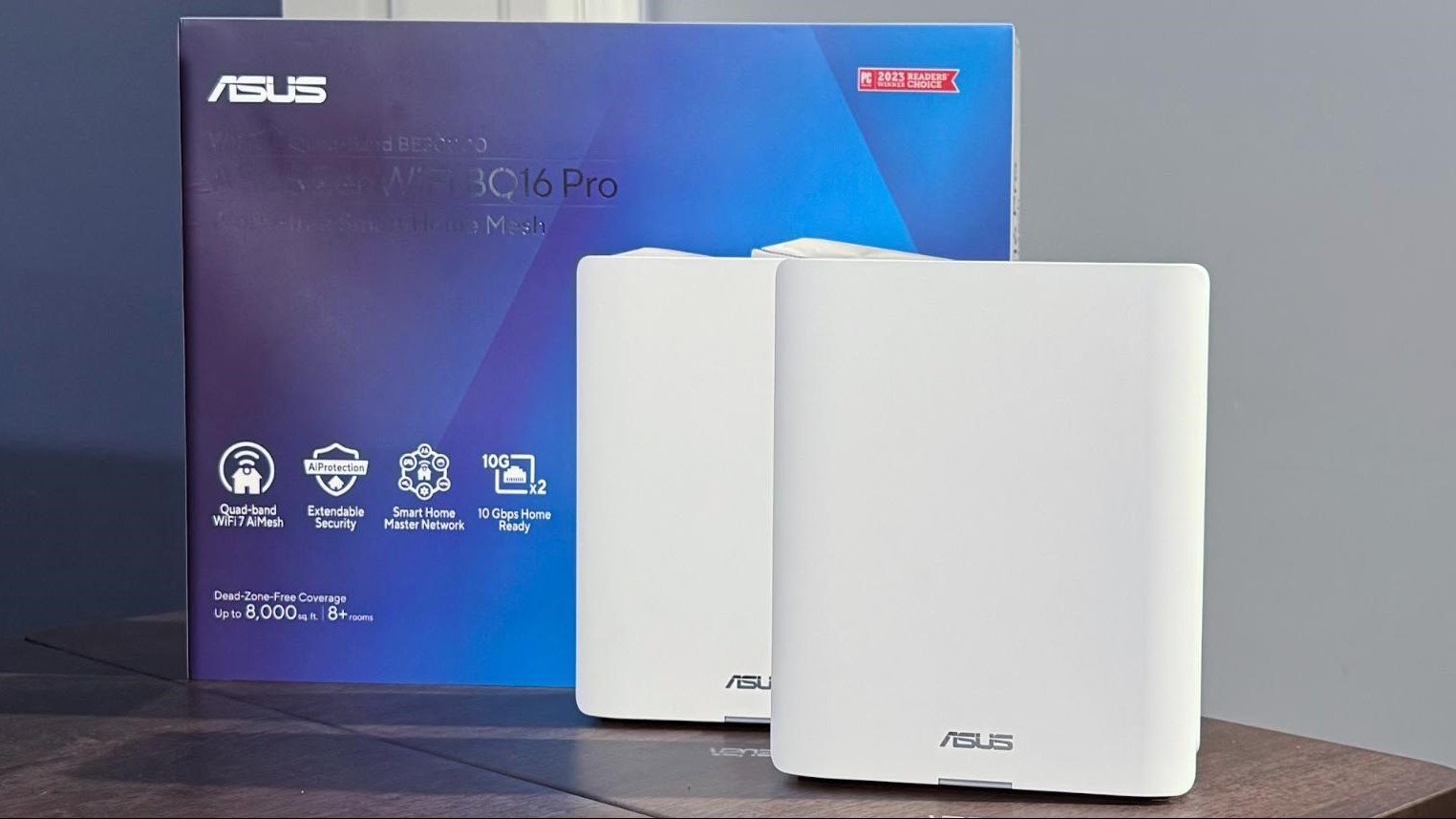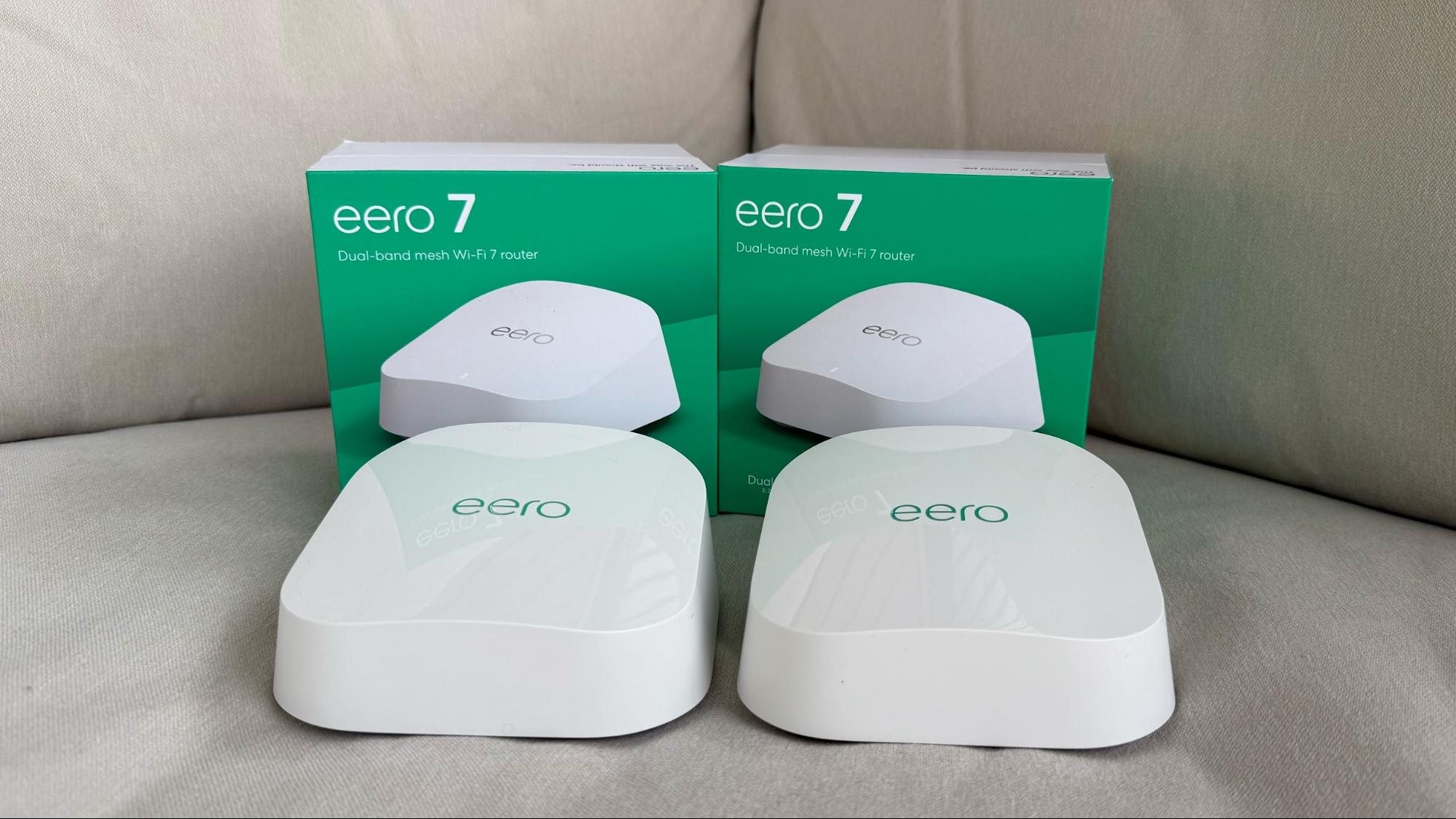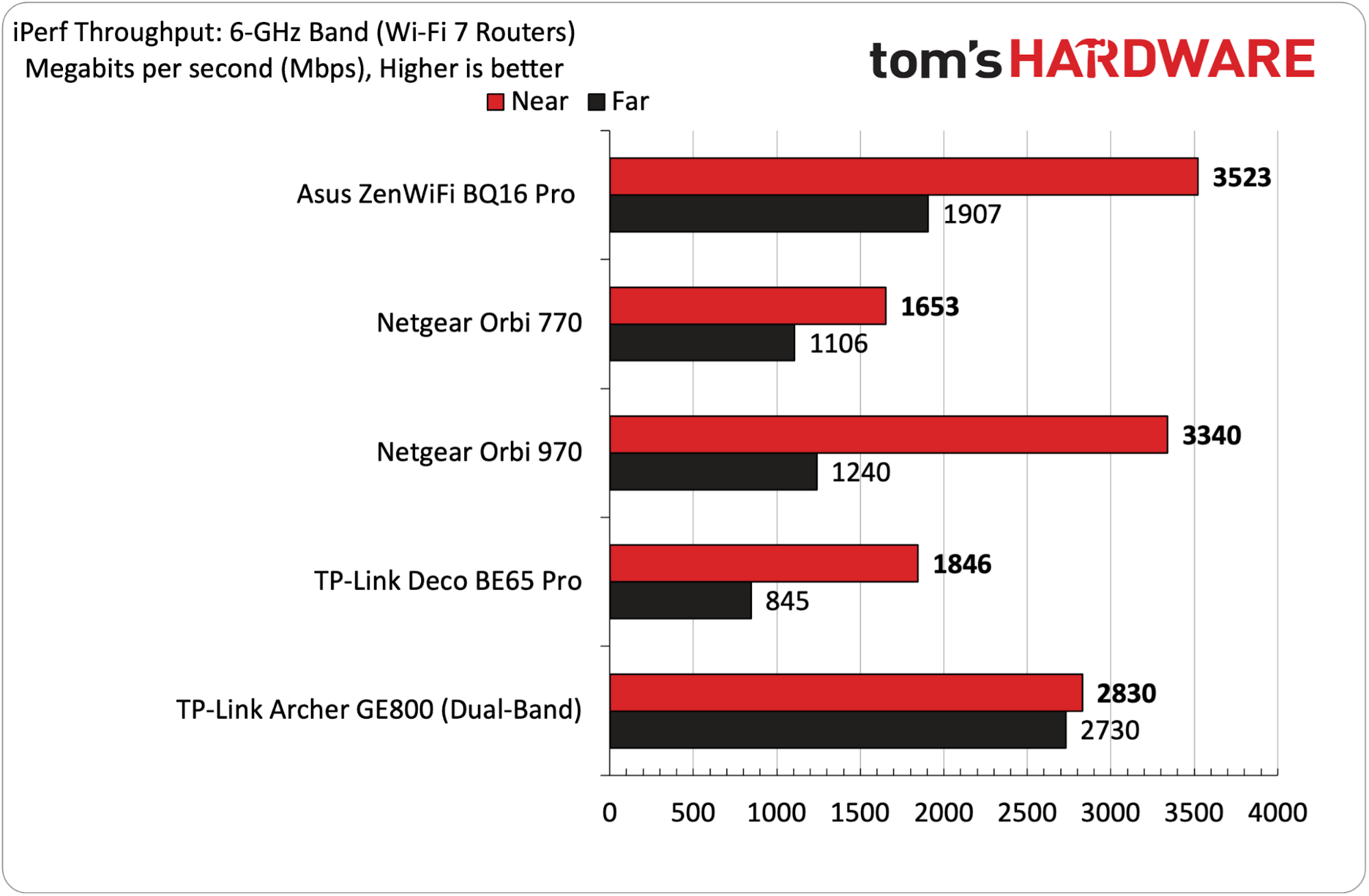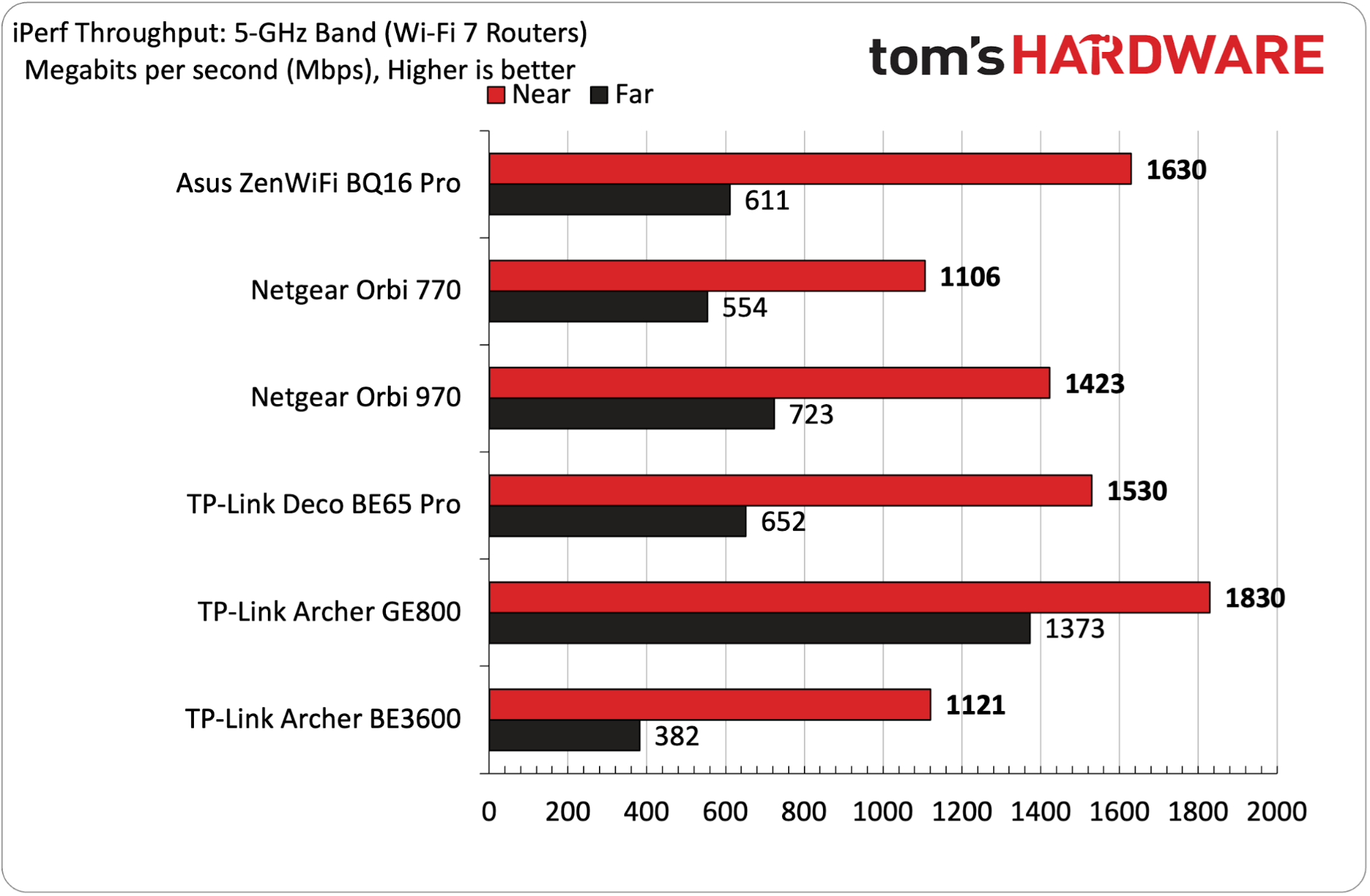Wi-Fi 6E versus Wi-Fi 7: Which type of router is a better buy?
With Wi-Fi 7 routers blanketing the market, is the upgrade over Wi-Fi 6E worth it?

It can be somewhat confusing if you’re in the market to replace an old wireless router or add a new one in your home or office. Currently, three wireless standards are prevalent in the marketplace: Wi-Fi 6, Wi-Fi 6E, and Wi-Fi 7.
The first Wi-Fi 6 devices arrived in 2019, while the first Wi-Fi 6E devices didn’t arrive until 2021. Wi-Fi 7, the most recent standard, started creeping into the market in late 2023 with a limited number of routers. You’ll want to research the newest high-performance Wi-Fi 7 routers for the fastest possible wireless speeds in your home. However, older routers that use the Wi-Fi 6E standard aren’t exactly slouches when it comes to transfer speeds, and in many instances, you could save some money by staying away from the bleeding edge of router technology.
What differentiates Wi-Fi 6E from Wi-Fi 7?
While Wi-Fi 6E and Wi-Fi 7 both support the 2.4 GHz, 5 GHz, and 6 GHz bands, Wi-Fi 7 implements some performance-boost improvements to the last band. Wi-Fi 7 doubles the channel bandwidth from 160 Hz to 320 Hz and boosts the maximum number of spatial streams from 8 to 16.
Coupling those advances with a maximum bandwidth of 2,400 Mbps per stream gives you a theoretical data rate ceiling of 46 Gbps in flagship Wi-Fi 7 routers. That is a massive increase in throughput compared to Wi-Fi 6E routers, which top out at 9.6 Gbps.
| Header Cell - Column 0 | Wi-Fi 6E | Wi-Fi 7 |
|---|---|---|
IEEE Standard | 802.11ax | 802.11be |
Wireless Bands | 2.4 GHz, 5 GHz, 6 GHz | 2.4 GHz, 5 GHz, 6 GHz |
Max Channel Bandwidth | 160 Hz | 320 Hz |
Maximum Spatial Streams | 8 | 16 |
Maximum Bandwidth per Stream | 1,200 Mbps | 2,400 Mbps |
Theoretical Maximum Data Rate | 9.6 Gbps | 46 Gbps |
Advanced Modulation | 1024 QAM | 4K QAM |
Wi-Fi 7 also supports Multi-Link Operation (MLO), giving wireless routers the ability to connect Wi-Fi 7 clients across multiple wireless bands simultaneously. For example, a Wi-Fi 7 client can connect to a Wi-Fi 7 router using a single aggregated link combining 2.4 GHz and 5 GHz bands, or 5 GHz and 6 GHz bands. The Wi-Fi 7 spec even allows the bonding of all three bands together for a single client. MLO not only offers improved performance, but it bolsters network reliability through load balancing and can lower network latency.
Be careful of what type of Wi-Fi 7 router you purchase
When Wi-Fi 6 supplanted Wi-Fi 5, we knew to expect greater performance across the board, and that was equally true when Wi-Fi 6E added the faster 6 GHz band absent from Wi-Fi 6. When it comes to Wi-Fi 7, you'll need to be aware of two classes of routers before clicking the purchase button.
Generally speaking, all Wi-Fi 7 routers support 4K-QAM and MLO; however, the similarities end there. On the low end, dual-band Wi-Fi 7 routers only support the 2.4 GHz and 5 GHz wireless bands. They lack the 6 GHz band that gives Wi-Fi 6E and Wi-Fi 7 routers such good short-range performance. In that respect, their maximum performance potential aligns more closely with Wi-Fi 6 routers than Wi-Fi 6E or Wi-Fi 7 routers. Dual-band Wi-Fi 7 routers also often lack the full 320 MHz channels afforded by the Wi-Fi 7 spec, with products like the MSI Roamii BE Lite and Amazon Eero 7 topping out at 240 MHz.
Get Tom's Hardware's best news and in-depth reviews, straight to your inbox.

On the other hand, full-featured tri- and quad-band Wi-Fi 7 routers include the 6 GHz band, allowing them to leverage the spec fully. Of course, maximum throughput is largely dictated by the number of streams and channels a router supports. However, all else being equal, tri- or quad-band Wi-Fi 7 routers perform better than their lesser dual-band brethren.
So, if you’re shopping for a new Wi-Fi 7 router, look for words like “Lite” or “Dual-Band,” because that clearly indicates that the product you purchase isn’t a full-spec device. Sure, you’ll pay less given the lower performance, but make no mistake, you won’t realize the true performance potential of the full Wi-Fi 7 spec.
Wi-Fi 6E versus Wi-Fi 7 Performance
The performance difference between the best Wi-Fi 6E and best Wi-Fi 7 routers is quite dramatic. Thanks to the expansion of channels from 160 MHz to 320 MHz and the inclusion of MLO, which allows a router to combine available bandwidth from multiple bands, we've seen some incredible throughput from Wi-Fi 7 routers.
While Wi-Fi 6E routers that we've tested max out at around 1,600 to 1,700 Mbps on the 6 GHz band, the fastest Wi-Fi 7 routers are seeing speeds surpass 3,000 Mbps at close range. For example, the Asus ZenWiFi BQ16 Pro hit 3,500 Mbps in our iPerf3 testing at 6 feet. The Netgear Orbi 970 was no slouch, coming in at 3,340 Mbps. Other top performers include the TP-Link Archer GE800 (2,830 Mbps) and the ZenWiFi BT10 (2,667 Mbps).


On the 5 GHz band, Wi-Fi 6E routers typically flirt with 1,500 to 1,600 Mbps at the high end. In our experience, Wi-Fi 7 routers don’t improve as much on that metric as on the 6 GHz band, but we’ve seen Wi-Fi 7 routers like the Archer GE800 surpass 1,800 Mbps at close range.
Wi-Fi 6E versus Wi-Fi 7 Cost
There’s no question that (tri- and quad-band) Wi-Fi 7 routers can deliver greater sustained performance than their Wi-Fi 6E forebears, so the only real reason to purchase a Wi-Fi 6E router today would be if they are available at a steep discount. If you're looking for a reasonably-priced Wi-Fi 6E router, the TP-Link AXE5400 and Asus RT-AXE7800 are standalone tri-band solutions with street prices of $149.99 and $199.99, respectively. If you prefer a mesh setup, the TP-Link Deco XE75 Wi-Fi 6E mesh router 2-pack costs $169.99, while the Asus ZenWiFi AXE7800 3-pack is $349.99.
Looking at the Wi-Fi 7 side of the equation, you can obtain a tri-band TP-Link Archer BE550 Wi-Fi 7 router for $199.99, while a Netgear Nighthawk RS300 is $279.99. However, when you start looking at mesh setups, prices are significantly higher for Wi-Fi 7 solutions. For example, the TP-Link Deco BE63 is $449, while the Asus ZenWiFi BT8 will set you back $499.
In other words, if you don’t need the expanded coverage that a mesh router would provide, going with a standalone Wi-Fi 7 router doesn’t impart a significant price premium over Wi-Fi 6E counterparts. And given the performance, security, and capacity improvements of Wi-Fi 7 over Wi-Fi 6E, it doesn’t make much sense to go with the older wireless standard today.
Things are murkier regarding Wi-Fi 7 mesh routers, as they still command a significant price premium over the Wi-Fi 6E competition. Sure, you can get the MSI Roamii BE Lite for $229, but you’re getting performance more akin to a high-end Wi-Fi 6 mesh system than something that can compete with or surpass a Wi-Fi 6E mesh router.
Is it worth paying a nearly $300 premium for a TP-Link Deco BE63 over a Deco XE75? In my opinion, absolutely not. Wi-Fi 7 is far more futureproof than Wi-Fi 6E, but that premium is only worth it if you’re willing to absorb the cost just to have the fastest wireless speeds possible.
The opportunities to upgrade to Wi-Fi 7 from older technologies continually increase. For better or worse, many manufacturers are devoting fewer resources to Wi-Fi 6E routers and are shifting the bulk of their attention to dual-, tri-, and quad-band Wi-Fi 7 solutions. As chipset prices drop and production volumes increase, we can expect pricing on Wi-Fi 7 products to fall in response.

Brandon Hill is a senior editor at Tom's Hardware. He has written about PC and Mac tech since the late 1990s with bylines at AnandTech, DailyTech, and Hot Hardware. When he is not consuming copious amounts of tech news, he can be found enjoying the NC mountains or the beach with his wife and two sons.
-
kanewolf If you have a WIFI6 (AX) router, you will probably see little benefit except in the room with the router. 6Ghz penetrates walls worse than 5Ghz. Unless you live in an apartment or other area where the 5Ghz spectrum is saturated with competing WIFI, 6Ghz provides minimal benefit to most people. The marketing hype causes extreme expectations and when there is little to no change, disappointment.Reply -
bill001g I wish the author was more detailed on how he tested this. Not that it really means much since it is unlikely he tested in some controlled lab and even if he did it doesn't relate to how it will work in some random house.Reply
The key issue is what exact end device was use for testing. For a very long time routers have had things like 4x4 mimo but client devices are very rare that have this feature.
He talks about MLO (bonding the different radio bands together). I have not even seen a add in nic card that has this feature, maybe someone makes one? I suspect no actual motherboard chipset will support it and it is highly unlikely any cell phone will ever support it.
To use this feature you would need 3 actual radio chips on the device. This will greatly increase the price and will likely never be used on a cell phone both because of the increased board space needed for the chips as well as the added battery power they will need.
The only way I can see to test some of these features is to use a unrealistic install using a router as a client bridge on the client end. -
The5thCacophony I just replaced two wifi access points which were using two old AC-1800 routers by a single Asus RT-AX86U Pro, bought on a clearance sale. Placed in the middle of the house, it is better in every way, using a single 5Ghz radio. Stability, speed. And better security with WPA3. The stock Asus firmware surprisingly has quite convenient cool features. Multiple guest networks, Wireguard VPN client.Reply
In short I am very happy since 3 weeks since the switch from Wifi 5 to 6. Now I read Wifi 7 is better!?!? Checking the price, a full featured Wifi 7 Asus router is at least double the sale price of the RT-AX86U Pro. I am going to pass as I have no need of increase speed. -
bill001g Reply
If more people were like you the router manufacture could not con people that think a router with a bigger number "7" somehow magically is better. They seem to forget that their end device needs to be upgraded also.The5thCacophony said:I just replaced two wifi access points which were using two old AC-1800 routers by a single Asus RT-AX86U Pro, bought on a clearance sale. Placed in the middle of the house, it is better in every way, using a single 5Ghz radio. Stability, speed. And better security with WPA3. The stock Asus firmware surprisingly has quite convenient cool features. Multiple guest networks, Wireguard VPN client.
In short I am very happy since 3 weeks since the switch from Wifi 5 to 6. Now I read Wifi 7 is better!?!? Checking the price, a full featured Wifi 7 Asus router is at least double the sale price of the RT-AX86U Pro. I am going to pass as I have no need of increase speed.
Asus has much better factory software than many other vendors. Part of the reason you pay a premium for the devices.
Wifi6e does actually run better for people that live in wifi congested area. The 6ghz band allows much more bandwidth to choose from. Problem is all the hogs that now attempt to use every channel on the new 6ghz band. You get people with huge numbers of mesh/routers in their house rather than just a single router. And now you have wifi7 that is attempting to use 320mhz of bandwidth for every mesh unit. So it won't be long until 6ghz is just as over utilized as 5ghz.
Note WPA3 only is more secure if every device you have can run it. If you run mixed wpa2/wpa3 mode it provides no benefit. In addition WPA3 now prevent WPS (which is massively insecure) from being used. Many of the so called "smart" device in people houses are dependent on WPS to connect. So for your average stupid consumer WPA3 will never be a thing. -
VizzieTheViz basically wifi6 and 7 and any letters added are just another marketing hoax (looking at you too hdmi and usb) instead of a standard.Reply
You still have to do a massive amount of research to be able to actually compare devices if your looking to buy something, no guarantee what features are implemented or how if you look at the number 7 (yes this is an hyperbole, but not by much).
Most people are using client devices that can’t even use the advanced features of the fully featured routers and again you have to do your homework to find out.
And even if you do all that and get everything figured out you probably still won’t notice much difference day to day between 6, 6e and 7.
Sorry for the rant, I just really dislike standards that are actually marketing terms. -
das_stig Reply
I have the RT-AX86U as an AP and so long as it can max out my broadband on 5Ghz anywhere in the house, why would I need to upgrade? 6E/7 is like most things in the PC industry, little real-world gain and all marketing fluff to make you upgrade.The5thCacophony said:I just replaced two wifi access points which were using two old AC-1800 routers by a single Asus RT-AX86U Pro, bought on a clearance sale. Placed in the middle of the house, it is better in every way, using a single 5Ghz radio. Stability, speed. And better security with WPA3. The stock Asus firmware surprisingly has quite convenient cool features. Multiple guest networks, Wireguard VPN client.
In short I am very happy since 3 weeks since the switch from Wifi 5 to 6. Now I read Wifi 7 is better!?!? Checking the price, a full featured Wifi 7 Asus router is at least double the sale price of the RT-AX86U Pro. I am going to pass as I have no need of increase speed.